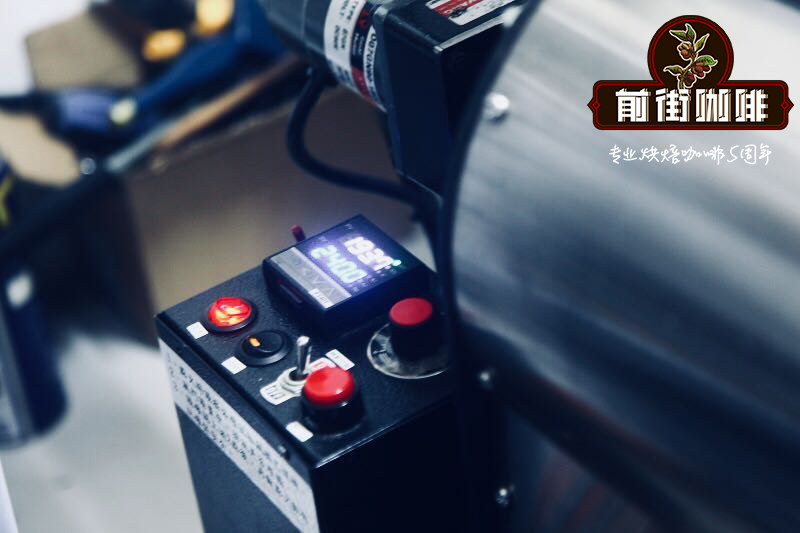How to clean the coffee roaster what do you need to pay attention to?

Cleaning and maintaining your roaster can be a daunting task-not only are there many components that need to be maintained, from roasters to piping and slag removers, but they are usually large, heavy or difficult to get. However, this is an essential part of becoming a coffee roaster.
Poorly maintained baking will bring great risks to the health and safety of you and your employees, and cause personal injury and economic losses.
To better understand how to maintain the roaster, I talked to Usonian Systems technicians Nicholas Flatoff and Brice Sturmer, an expert advice and specialist equipment provider for coffee roasters throughout North America. This is their suggestion, starting with the roaster and then transferring it to other equipment.
Take care of your roaster: the basics
Each roaster is different and there is no general guide to compensate for the details of your equipment. "the best place to start is to look at the manufacturer's manual," says Brice.
He also suggested contacting a technician or operator. Manufacturers don't necessarily set up ovens the way they produce ovens; they rely heavily on operators and technicians like me to provide them with feedback on what's actually going on with their machines on site. In terms of maintenance, the manual can only be used with the toaster. "
After you have a better understanding of the machine, please check the hourly log. "if you know that the machine has been running for hours, then this is the best way to plan and arrange a preventive maintenance plan," he stressed. "
Of course, sometimes it's easier said than done. Brice told me that roasters used to have hour counters, but modern roasters don't usually have this function. He suggested recording hours in digital spreadsheets so that data could be easily checked and shared.
How to clean and maintain your roaster
The general rule of thumb for baking maintenance is to keep the airflow unimpeded. Although this will vary depending on your roaster and baking method, in general, you should aim to bake and clean the husk collector every 3 times.
If you prefer to cook darker, be sure to check more frequently to see if the oil accumulates and suppresses the airflow. On the other hand, don't try to reduce inspection just because you're burning: that's why you end up on fire, not to mention poor-quality baking due to limited airflow.
In addition to the husk collector, the cooling tray needs to be cleaned every day, if not more frequently. "if you bake a whole batch four times an hour all day, you may need to vacuum the cooling tray twice a day, two or three times a day," Nicholas said. This almost applies to most roasters with sizes ranging from 15 to 150 kilograms.
"if you have been baking for two or three hours, check the cooling tray to make sure there is no accumulation. Make sure it doesn't block the airflow. "
You should check ventilation and bearings once a week-do you need lubrication? Nicholas told me that if you fatten them regularly, you may be using the wrong product. "if you use appropriate food safety high temperature grease, you don't have to lubricate the bearing every day," he said. "
Please pay attention to the following: low temperature grease not only needs to be reapplied frequently, but also affects the performance of the machine.
For deep cleaning roasters, Nicholas recommends starting each month and then making adjustments. "if you find that you need to perform this operation more frequently, do so more frequently. If you find that the monthly charge is too high, please back it up to two months, three months, anyway. Each oven has its own rhythm and needs, "he told me."
When doing deep cleaning once a month, be sure to check fans, husk cyclones, cooling trays, etc. Replace the required tape and check to see if the gasket needs to be replaced. Check the gap of the photosensitive drum to see if it needs to be adjusted.
Clean the flue every six months. Every 2000 hours or so (about 8 hours a day, 5 days a week, about once a year), you may need to replace the bearings. You should also adjust the ignition of the oven and check the gearbox oil every year.
Throughout the year, make sure that you regularly check every part that may be covered with chaff or dust. "it's unusual for us to get emergency maintenance calls and we have to go to the scene and find a clean oven," Nicholas said. "
How to clean and maintain the rest of the oven
Every day, you should dust and clean the house and empty the vacuum and garbage to minimize harm and comply with food and safety regulations.
Check the pipe weekly for potential leaks or airflow blockages.
Once a month, check that the carbon monoxide meter and catheter are working properly. Clean the house thoroughly, too. "you do need to climb into those cramped spaces with at least a steel brush and vacuum cleaner every month," Nicholas said. "
Plan to thoroughly clean dust collectors, green loaders and other equipment you own every quarter. This is also a good time to check that the fire extinguisher is in place and working, and to check the safety plan through the fire extinguishing plan and with your team.
Finally, the afterburner is inspected once a year.
But remember, each baking method is different. Brice recommends paying attention to the accumulation on the site, and then adjusting the cleaning plan. Due to workflow and turnover, some places may need to be checked more frequently.
Warning signs for attention
You have created a maintenance plan and cleaned it regularly. Does that mean you know all about it? It's not necessary. Beware of signs that require special attention, especially in the following two areas:
Unusual noise
Did your machine make an unexpected sound? Nicholas told me that there are two common reasons: "the first is the bearing and the second is the drum."
He associates scraping and scraping sounds with rollers, and chanting and grinding sounds with bearings. However, it is impossible to know what the problem is without checking the toaster.
Whatever you do, don't put off solving the problem until tomorrow. "these [noises] indicate a problem," said Nicholas. That may not have damaged the roaster, but if you continue to roast it without any treatment, it may cause potential irreparable damage to the roaster. "
Do you hear a strange sound that sounds like scratching, scraping, chanting or polishing? It's still not worth the wait. Check immediately-you don't want to leave serious damage for long enough just because of usually minor problems, and you don't have to replace the roaster.
Changes of baking situation and baking performance
According to Brice, "any deviation that usually brings to your personal data" should be brought to your attention.
"if your barbecue suddenly becomes longer or shorter, and you have not made any changes in operation, it may indicate that there is an airflow problem or burner problem, both of which require regular maintenance." He said.
Important Notice :
前街咖啡 FrontStreet Coffee has moved to new addredd:
FrontStreet Coffee Address: 315,Donghua East Road,GuangZhou
Tel:020 38364473
- Prev

Can boutique coffee capsules make delicious espresso? how to use coffee capsules?
For coffee consumers, capsule coffee is in a sense a compromise between convenience and quality. However, as they become more and more popular, boutique coffee has gradually joined the camp of capsule coffee. So, how good can coffee capsules do? Can we break people's inertia of thinking? And why are they becoming more and more popular? This article will find out. 01. What?
- Next

How to use the roasting probe to observe the baking degree of coffee how should the baking probe be maintained
Readings from different detectors and ovens will always be different. However, understanding the variables that affect the readings of each baking probe and how to control these variables can help you maintain consistency in baking, data and quality. Join us to explore how to better understand baking probe data, how different probes work, and how to help ensure consistent readings. Baking probe position
Related
- Beginners will see the "Coffee pull flower" guide!
- What is the difference between ice blog purified milk and ordinary milk coffee?
- Why is the Philippines the largest producer of crops in Liberia?
- For coffee extraction, should the fine powder be retained?
- How does extracted espresso fill pressed powder? How much strength does it take to press the powder?
- How to make jasmine cold extract coffee? Is the jasmine + latte good?
- Will this little toy really make the coffee taste better? How does Lily Drip affect coffee extraction?
- Will the action of slapping the filter cup also affect coffee extraction?
- What's the difference between powder-to-water ratio and powder-to-liquid ratio?
- What is the Ethiopian local species? What does it have to do with Heirloom native species?

